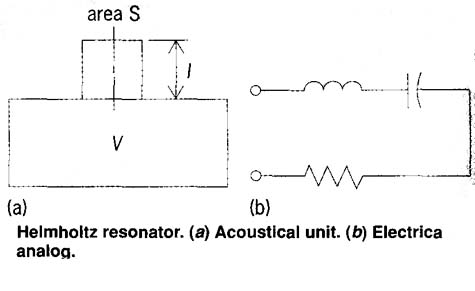AMAZON multi-meters discounts AMAZON oscilloscope discounts
 A device consisting of a combination of elements having
mass and compliance whose acoustical reactances cancel at a given frequency.
Resonators are often used as a means of eliminating an undesirable frequency
component in an acoustical system. In other instances resonators are
used to produce an increase in the sound pressure in an acoustic field
at a particular frequency.
A device consisting of a combination of elements having
mass and compliance whose acoustical reactances cancel at a given frequency.
Resonators are often used as a means of eliminating an undesirable frequency
component in an acoustical system. In other instances resonators are
used to produce an increase in the sound pressure in an acoustic field
at a particular frequency.
Resonators are useful most often in the control of low- frequency sound. They are of particular value in reducing the noise from sources having constant frequency excitation.
Resonators have also found considerable application in architectural acoustics. It's often difficult to obtain adequate control of reverberation time at low frequencies in a large studio or auditorium using conventional acoustical materials. A number of designs for these spaces have included the construction of resonators behind walls or in the ceiling to obtain increased low-frequency absorption and thus provide more satisfactory reverberation characteristics.
The Helmholtz resonator (see illustration) is the simplest and most often utilized acoustical resonator. The unit consists of a straight tube of length I and cross-sectional area S, connected to a closed volume V. This combination is directly analogous to the simple series LC electrical circuit.